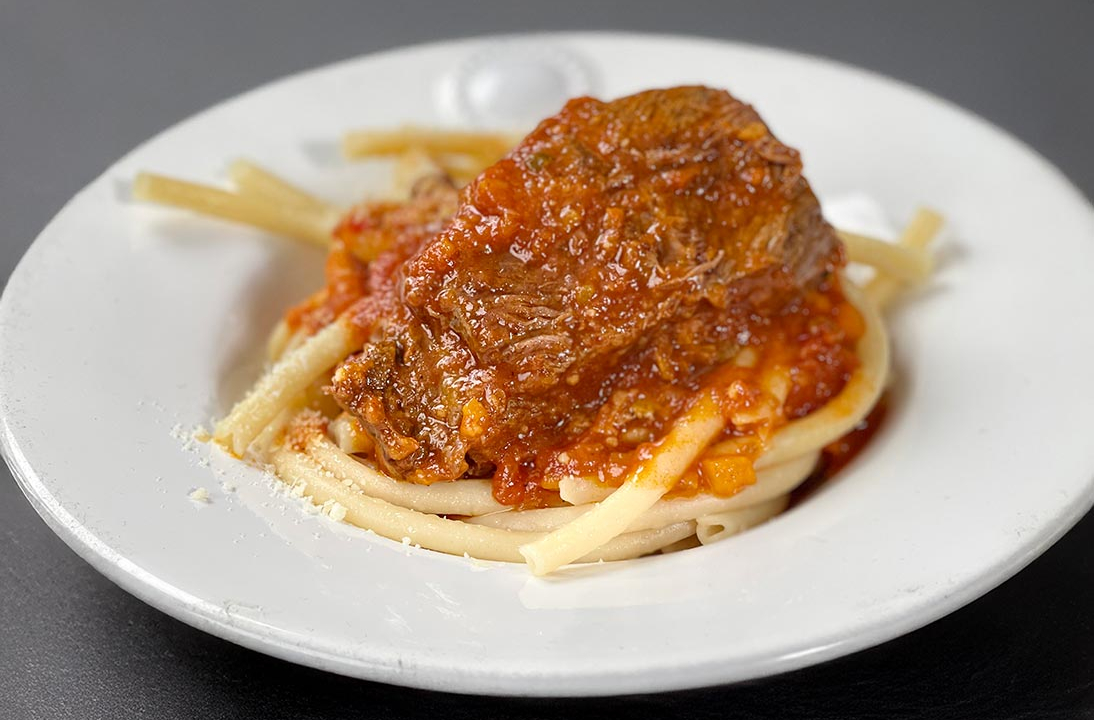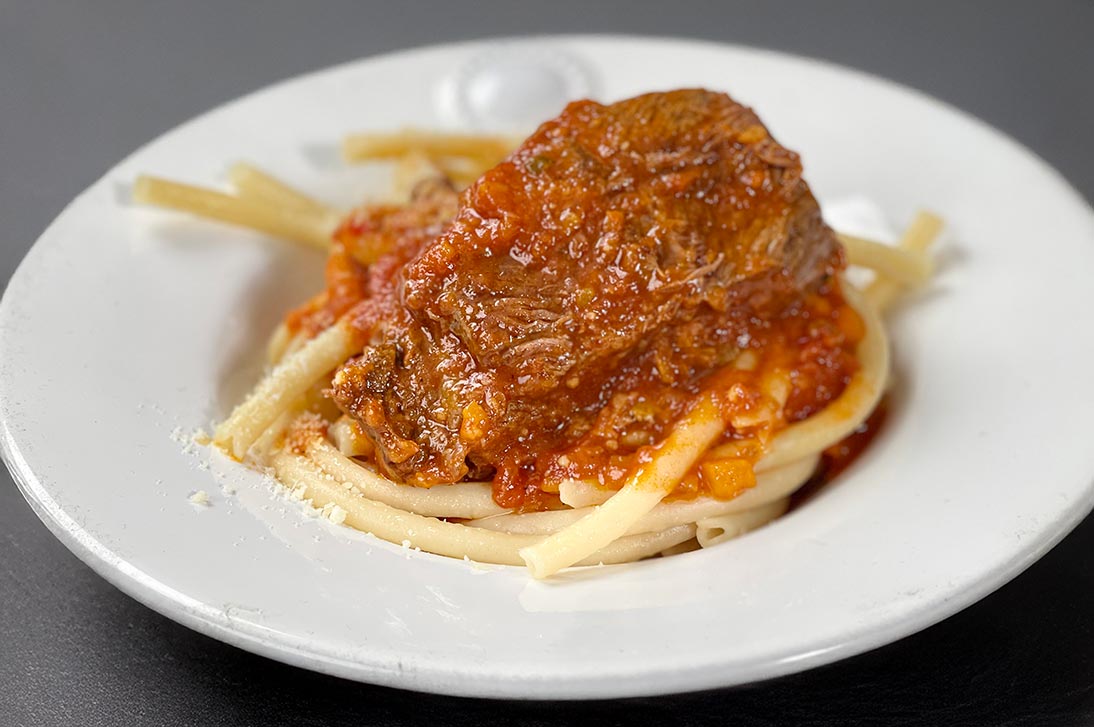The secret to the perfect Greek braised beef in tomato sauce
ARGIRO BARBARIGOU

There is hardly a person who doesn’t love kokkinistó, the Greek braised meat dish in tomato sauce.
It is a fixture at Sunday dinners and family gatherings, always awaited with anticipation. Everyone remembers their grandmother’s version. Tender, melt-in-your-mouth beef bathed in a rich, thick tomato sauce with spices. The sauce had a delicate sweetness that made it irresistible; when the meal ended, a piece of bread was always used to soak up the sauce from the plate.
What made it so flavorful, so tender and memorable? There must be a secret! Was it the cut of meat, the combination of ingredients, or something else? The answer, it turns out, lies in the method.
The key to success
After countless variations and endless conversations, the answer is clear: the secret is in the cooking method. Slow cooking, the technique favored by generations of home cooks, transforms even the toughest cut into something tender and deeply flavorful. It’s not only about time, but also attention. Watching, stirring, waiting with patience until the meat softens completely. This patient, low-and-slow approach is the foundation of traditional Greek cooking and the secret to every successful kokkinistó.
Choosing the right cut
While any cut of beef can be used if cooked slowly and patiently, some lend themselves more readily to this dish. Chuck (shoulder), round (topside or silverside), and shank (with its natural collagen) all deliver excellent results. Even tougher cuts like short ribs or neck can become meltingly tender. The essential factor is low heat and enough time. Quick, high-heat cooking leads to tough, dry meat.
Adding bones enhances flavor and enriches the sauce. Ask your butcher for beef bones and simmer them with the dish for a depth of taste that will elevate your kokkinistó.
Essential steps
- Begin by browning the beef in olive oil over medium-high heat. This is the only stage where high heat is used. The meat should be at room temperature and completely dry. Pat it with paper towels to remove any moisture.
- Some cooks coat the meat in flour before browning to help thicken the sauce, but this can weigh down the flavor and cloud the tomato base. A clean, flourless sauté allows the sauce to remain bright and balanced.
- Work in batches to avoid overcrowding the pan, ensuring that each piece forms a golden crust to seal in its juices. Set browned pieces aside as you continue.
Slow cooking
After the meat, it’s time for the vegetables, which should also caramelize patiently in olive oil. Be sure to use the same pot where the beef was seared, even if the bottom has browned bits stuck to it. That’s where incredible flavor is hidden.
Lower the heat slightly and add finely chopped onion, garlic, and a bit of carrot for natural sweetness. You can also add any vegetables you like, such as leek or celery.
A touch of sweetness is essential in tomato-based dishes, as ingredients like wine and tomato bring a fair amount of acidity. Tomato paste is a must, as it adds richness and depth to the sauce. Always stir it into the onions as they caramelize and let it cook for a full minute, releasing the concentrated aroma of the tomato.
Next comes the wine, preferably red, which will deglaze the vegetables. As you stir, it lifts the caramelized juices from the bottom of the pot. Let it simmer for a few minutes until it reduces by half, concentrating its flavor in the sauce.
Whether you use fresh or canned tomatoes depends on the season. In summer, when fresh tomatoes are sweet and juicy, they’re ideal. Seasonal ingredients are always best. Otherwise, peeled whole tomatoes (which should be crushed before adding) or canned diced tomatoes work beautifully any time of year. Both tomato and wine are acidic. They help break down the meat proteins during simmering, making the beef tender.
Tomato-based stews need to be covered while cooking so the moisture doesn’t evaporate. They should simmer over low heat until the meat is tender and can be cut with a fork. Cooking time always varies. Cover the pot and let it gently simmer, this is where the secret lies.
Spices in this dish should be barely noticeable. A stick of cinnamon or a few allspice berries can be added briefly, then removed, to leave a hint of flavor without overwhelming the sauce. The idea is for guests to wonder whether spices were added at all.
Always adjust the salt and pepper at the end. After nearly two hours of simmering, liquids reduce significantly, and what seemed lightly salted can turn overly salty.
This kind of stew usually calls for a generous amount of sauce, especially if served over pasta, so the pot should contain plenty of liquid from the beginning. If you want a thicker sauce, simply uncover the pot near the end, remove the meat (keeping it covered), and raise the heat. In just a few minutes, the sauce will reduce and become thick and velvety.
I hope my experience helps you prepare the kind of tomato-braised beef that everyone remembers.
